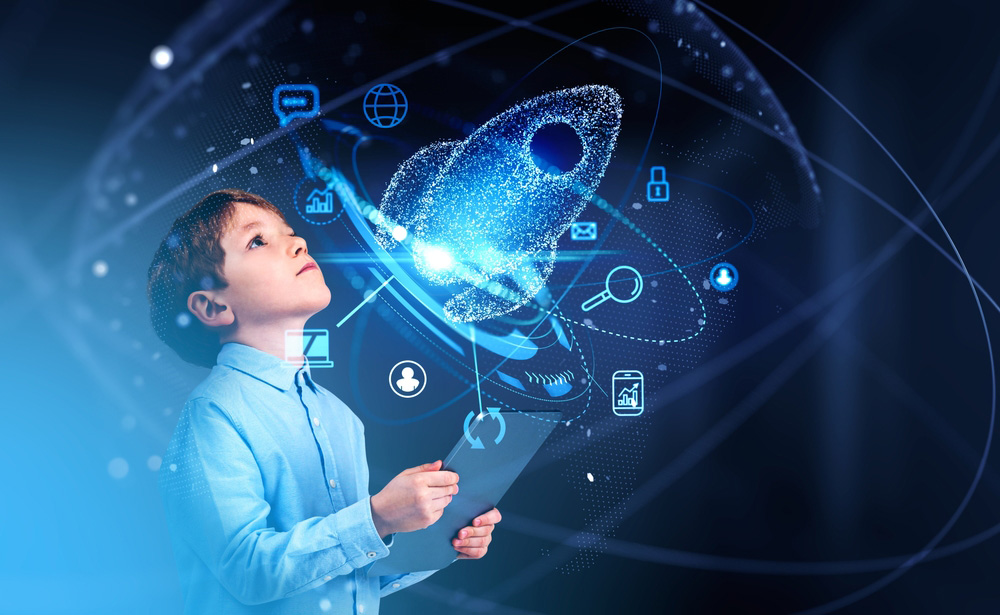

How Technology is Changing the Education Landscape
The world of education is undergoing a significant transformation, and technology is at the forefront of this change. The traditional classroom setting, where students sit passively and receive information from their teachers, is gradually giving way to a more interactive, student-centered, and technology-driven learning environment. Technology is revolutionizing the way students learn, teachers teach, and institutions operate, making education more accessible, efficient, and effective.
Personalized Learning
One of the most significant ways technology is changing education is by enabling personalized learning. With the help of artificial intelligence, machine learning, and data analytics, teachers can now tailor their instruction to meet the unique needs and abilities of each student. Online learning platforms and adaptive software can adjust the difficulty level of course materials based on a student’s performance, providing extra support or challenging them to reach their full potential.
Moreover, technology allows students to learn at their own pace, anytime, and anywhere. Online courses, MOOCs (Massive Open Online Courses), and virtual classrooms are making high-quality educational resources available to students worldwide, transcending geographical and socio-economic barriers. This flexibility is particularly beneficial for students who require additional support, have different learning styles, or need to balance education with work or family commitments.
Virtual and Augmented Reality
Virtual Reality (VR) and Augmented Reality (AR) are transforming the learning experience by providing immersive, interactive, and engaging environments. These technologies are particularly effective in subjects like science, technology, engineering, and mathematics (STEM), where complex concepts can be difficult to visualize and understand. By using VR and AR, students can explore virtual labs, dissect virtual frogs, or tour historical sites, making learning more enjoyable and retention higher.
Flipped Classrooms
The traditional lecture-homework format is being flipped on its head, quite literally. The flipped classroom model involves students watching lectures at home and working on assignments and projects in the classroom, under the guidance of their teachers. This approach promotes active learning, encourages collaboration, and allows teachers to provide more personalized support and feedback.
Online Resources and Open Educational Resources
The internet has made it possible for students to access a vast array of educational resources, including online textbooks, videos, podcasts, and tutorials. Open Educational Resources (OER) are free, openly licensed materials that can be used, adapted, and shared by educators and students worldwide. These resources reduce the cost of education, promote equity, and provide students with a wealth of learning materials.
Improved Assessment and Feedback
Technology is also revolutionizing the way students are assessed and receive feedback. Digital assessment tools can analyze student performance quickly and accurately, providing instant feedback and identifying areas where students need improvement. Teachers can use this data to adjust their instruction, providing targeted support and interventions.
Professional Development for Teachers
Teachers are not being left behind in this technological revolution. Online courses, webinars, and professional development opportunities are enabling teachers to upskill and reskill, staying abreast of the latest educational technology and pedagogical innovations. This support is essential, as teachers are key to implementing technology effectively in the classroom.
Challenges and Opportunities
While technology is transforming education in many positive ways, there are challenges to be addressed. The digital divide remains a significant concern, as not all students have access to devices or reliable internet connectivity. Additionally, the over-reliance on technology can lead to distractions, decreased attention span, and a lack of face-to-face social interaction.
Despite these challenges, the opportunities offered by technology in education are vast and multifaceted. By leveraging technology, educators can create more inclusive, effective, and engaging learning environments that prepare students for success in the 21st century.
The Future of Education
As technology continues to evolve, it is likely to have an even more profound impact on education. Artificial intelligence will become more prevalent, enabling more sophisticated adaptive learning systems and personalized instruction. Virtual and augmented reality will become more widespread, providing immersive learning experiences that simulate real-world environments.
The future of education is bright, and technology is playing a starring role in shaping it. By embracing innovation, educators can create a more equitable, accessible, and effective education system that prepares students for success in an increasingly complex and interconnected world. As the renowned educator, John Dewey, once said, "If we teach today as we taught yesterday, we rob them of tomorrow." Technology is empowering educators to teach for tomorrow, today.




